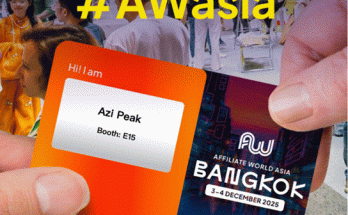In the rapidly evolving communications landscape, the divide between traditional media and digital engagement continues to present both challenges and opportunities for businesses, brands, and audiences.
Traditional media—television, radio, newspapers, and print—has long served as the cornerstone of public information and brand awareness. However, the rise of digital platforms—social media, streaming services, blogs, and mobile apps—has redefined how content is consumed, how quickly it travels, and how deeply it resonates.
The urgency to bridge this gap isn’t merely a matter of preference or technological evolution; it’s about survival and relevance in a world where consumer behavior is increasingly fragmented and personalized.
Whether navigating local markets in regions like Colorado or reaching global audiences, brands must tailor their communication to align with diverse expectations and preferences. While traditional media offers credibility, structure, and mass reach, digital engagement delivers immediacy, interaction, and data-driven insight.
Harmonizing these two worlds is now essential for any brand that wishes to maintain consistency, trust, and engagement across multiple touchpoints.
Integrated Communications and the Role of Public Relations
Public relations has become the bridge that connects legacy communication frameworks with the ever-expanding digital ecosystem. A well-versed PR strategy today does not choose between old and new—it balances both by ensuring that messages are coherent, accessible, and adaptable across formats.
Any PR firm based in Colorado that excels at merging legacy media relations with modern digital storytelling recognizes that placing a brand in a national newspaper or on a local television channel still holds immense value, especially in terms of reputation and visibility.
However, they also understand that today’s audiences do not merely consume—they engage, share, and co-create content across platforms like Instagram, LinkedIn, X, and TikTok. As such, their strategy includes crafting media pitches that are not only suitable for traditional outlets but also optimized for digital amplification through SEO-rich press releases, influencer collaborations, and visual storytelling.
By understanding the language, rhythm, and metrics of both traditional and digital channels, such PR agencies ensure that a campaign’s impact is not limited to any one domain. Instead, it ripples across mediums, creating a unified brand narrative that meets audiences wherever they are.
The Power of Narrative Consistency
One of the most pressing challenges in merging traditional and digital media is maintaining narrative consistency. In the past, a single press release or print advertisement may have been sufficient to shape public perception. Today, however, a brand’s story must unfold in layers across various platforms. A headline in a newspaper must match the sentiment of a social media post, which in turn should align with the brand’s visual language on a streaming ad or mobile app.
This narrative coherence is what gives brands authenticity in a hyper-connected world. Consumers now have the tools to identify inconsistencies and expose contradictions. The voice, tone, and positioning must be carefully curated across all channels. That requires a blend of traditional editorial discipline and the agility of digital storytelling.
Companies that master this integration typically invest in cross-functional teams. Their PR departments collaborate closely with content creators, social media strategists, and data analysts to ensure that messaging remains both unified and platform-appropriate. This collaborative approach ensures that traditional credibility and digital virality work hand in hand rather than in opposition.
Evolving Audience Expectations
Consumers today expect more than information; they demand participation. Traditional media historically offered a one-way stream of communication: a broadcaster speaks, and the audience listens. In contrast, digital platforms thrive on interaction—comments, shares, polls, likes, and even memes. The gap between these expectations requires a shift not only in how brands communicate but also in how they listen.
The integration of feedback loops is critical. When a television segment airs or a print article goes live, digital platforms can be used to gather real-time reactions. These insights then shape follow-up content, allowing brands to fine-tune their messaging based on audience sentiment. Furthermore, digital tools such as sentiment analysis, social listening, and real-time engagement metrics enable brands to measure the impact of traditional media exposure more accurately than ever before.
The merging of these worlds enables a more comprehensive understanding of consumer behavior. Brands no longer operate on assumptions—they rely on data to map engagement pathways and refine their strategies accordingly.
Challenges in Harmonizing the Two Realms
Despite the advantages, the convergence of traditional and digital media is not without its obstacles. One major hurdle is internal resistance. Many organizations remain siloed, with separate departments handling traditional media and digital initiatives. This segmentation leads to fragmented strategies, duplicated efforts, and missed opportunities for synergy.
Budget allocation also presents a challenge. Traditional media placements often demand higher upfront costs but deliver long-term brand equity. Digital campaigns, on the other hand, offer measurable ROI in shorter bursts but may lack the gravitas of legacy media. Balancing investment between these areas requires careful planning and a clear understanding of campaign objectives.
READ MORE : Importance of Applied Behavior Analysis Program in Autism Journey
Future-Proofing Brand Communication
As communication continues to evolve, the need to future-proof brand messaging becomes paramount. Emerging technologies, such as augmented reality, virtual events, AI-generated content, and immersive storytelling, will further deepen the integration between traditional formats and digital interfaces.
The key lies in adaptability. Brands must be willing to continuously reevaluate their communication strategies, abandon outdated tactics, and embrace new tools that facilitate integration. Media convergence should not be viewed as a threat to tradition, but rather as an opportunity to enhance it.
Moreover, training and education within organizations play a crucial role. Equipping teams with the skills to navigate both realms ensures that brand storytelling remains compelling, relevant, and resilient. Whether it’s understanding how to write a compelling op-ed or how to optimize content for a social algorithm, modern communicators must be as fluent in media planning as they are in digital engagement.
True integration does not merely happen at the operational level. It begins with a mindset—one that recognizes that storytelling, at its core, is medium-agnostic. When guided by purpose, informed by data, and executed with agility, the fusion of traditional and digital media becomes not only achievable but also essential for meaningful engagement.



